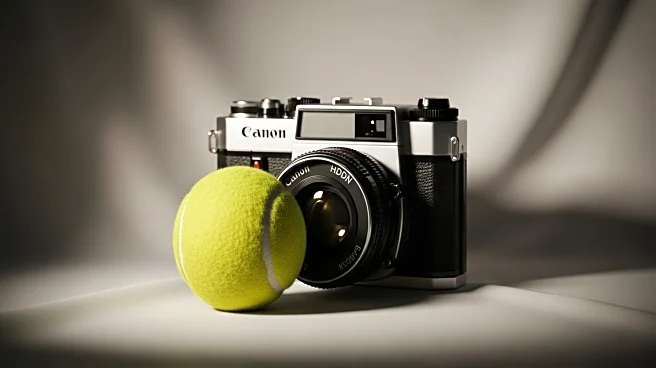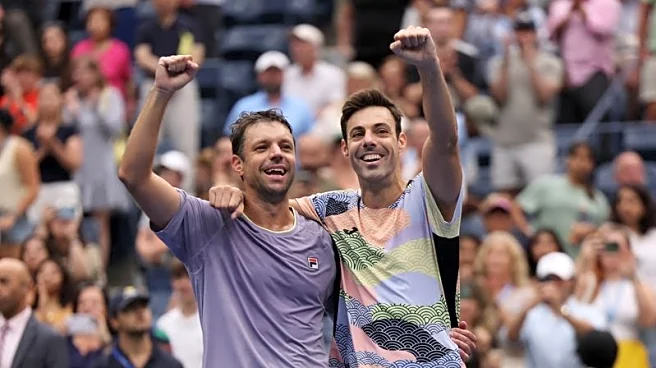What's Happening?
Art Seitz, a celebrated photographer known for capturing iconic moments in tennis, passed away on August 23 in Fort Lauderdale, Florida, at the age of 82. Over his 50-year career, Seitz developed close relationships with many tennis legends, including Serena Williams, Andre Agassi, and Arthur Ashe. His work spanned major tournaments such as Wimbledon, the U.S. Open, and the French Open, where he documented pivotal moments like Billie Jean King's 'Battle of the Sexes' victory in 1973 and Maria Sharapova's French Open win in 2012. Seitz's photographs have been featured in prominent publications, including a memorable cover of World Tennis magazine showcasing Bjorn Borg with a block of ice.
Why It's Important?
Art Seitz's contributions to sports photography have left a lasting impact on the tennis world, providing fans and historians with a visual record of the sport's evolution and its stars. His ability to capture both the intensity of competition and the personal moments of players has enriched the cultural tapestry of tennis. Seitz's work not only documented the achievements of tennis greats but also helped elevate the sport's profile globally. His passing marks the end of an era for tennis photography, leaving behind a legacy that will continue to inspire future generations of photographers and sports enthusiasts.
What's Next?
The tennis community is likely to honor Art Seitz's legacy through tributes and retrospectives of his work. His photographs may be showcased in exhibitions or publications celebrating his contributions to the sport. As the tennis world reflects on his impact, there may be renewed interest in preserving and promoting the history of tennis through visual media. Additionally, Seitz's work could inspire upcoming photographers to explore the intersection of sports and personal storytelling, continuing the tradition of capturing the human side of athletic competition.
Beyond the Headlines
Art Seitz's photography not only chronicled the achievements of tennis players but also highlighted the cultural and social aspects of the sport. His images of players like Arthur Ashe, who showed Seitz his post-surgery scar, offer insights into the personal challenges and triumphs faced by athletes. Seitz's work serves as a reminder of the broader narratives within sports, including issues of health, gender equality, and the personal lives of athletes. His ability to capture these dimensions adds depth to the understanding of tennis as more than just a competitive endeavor.













